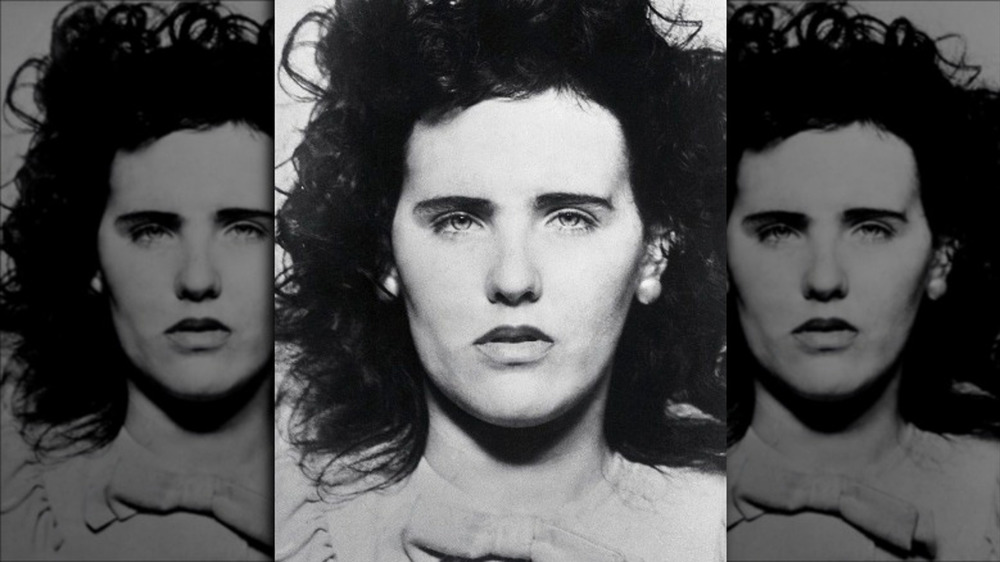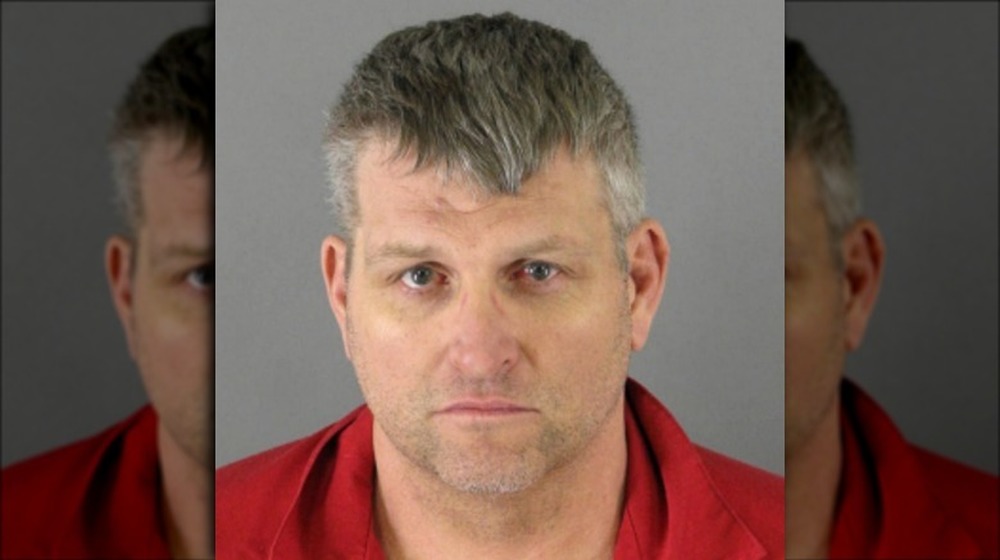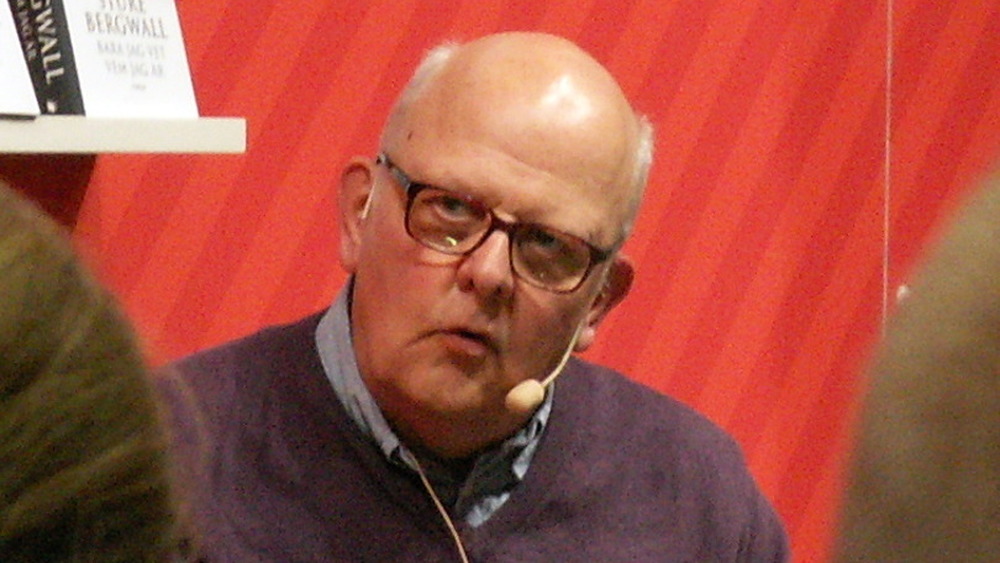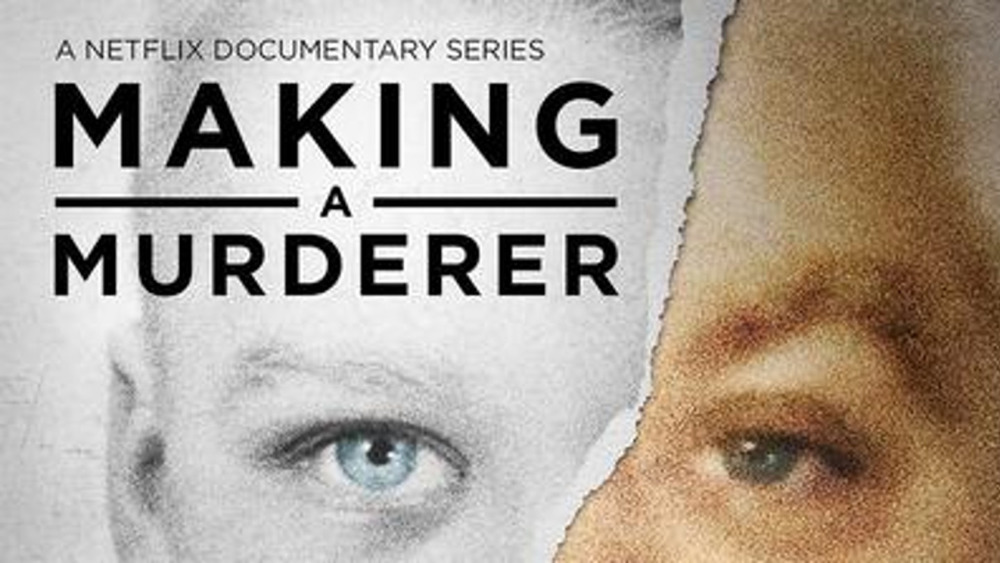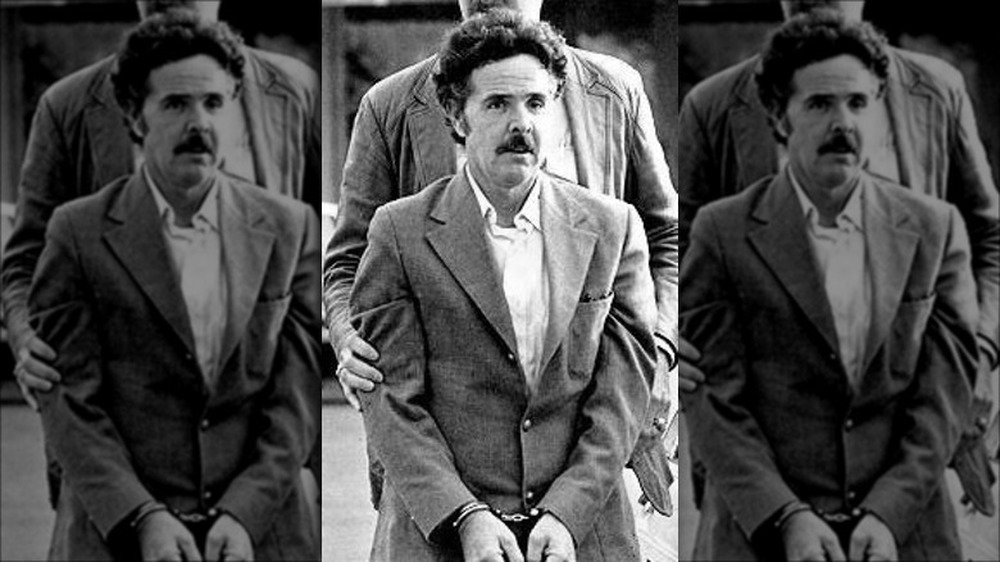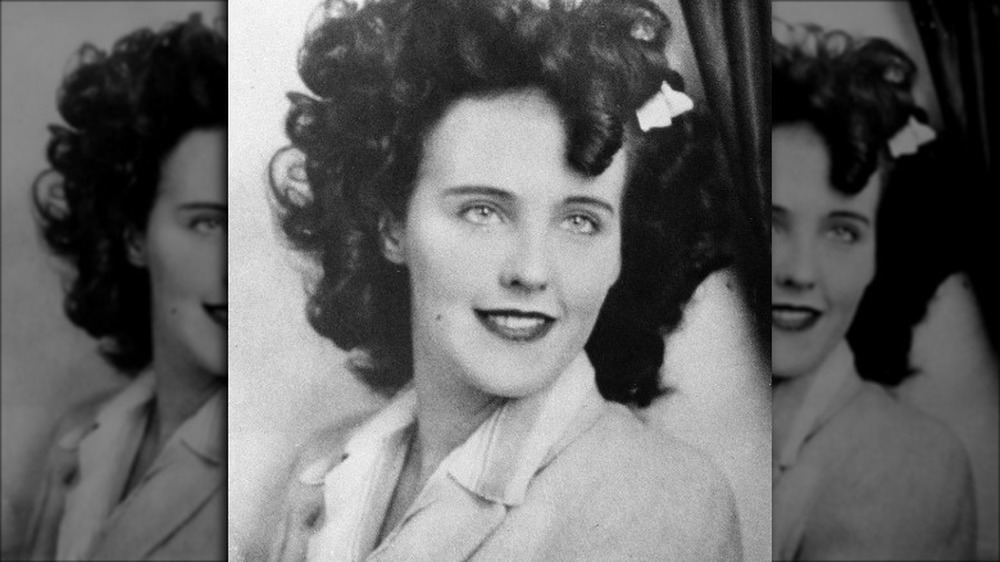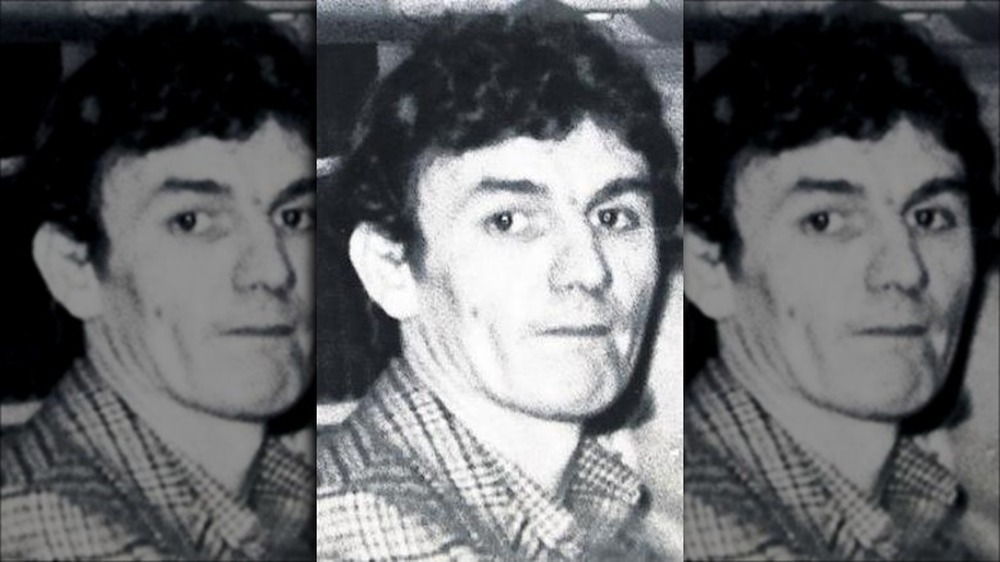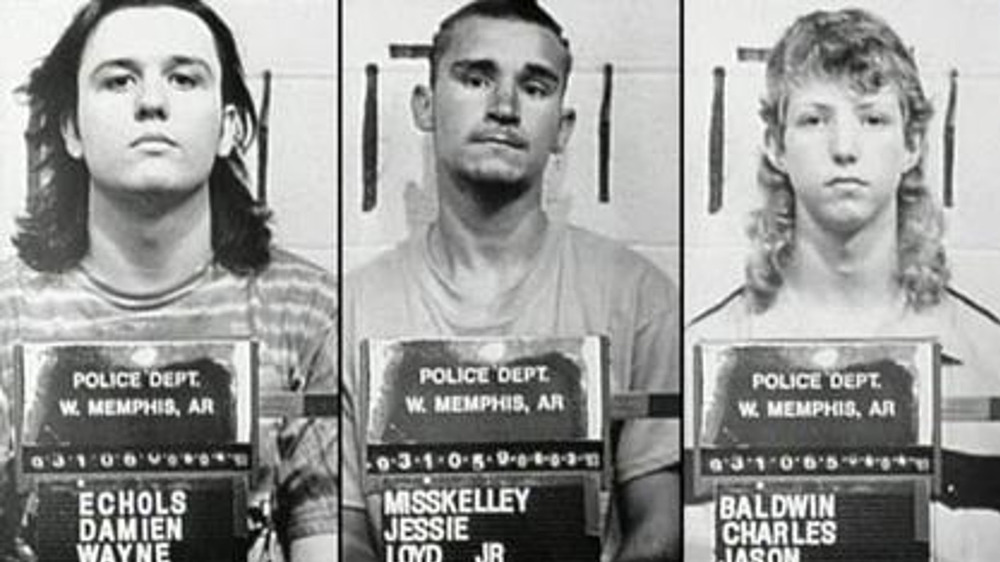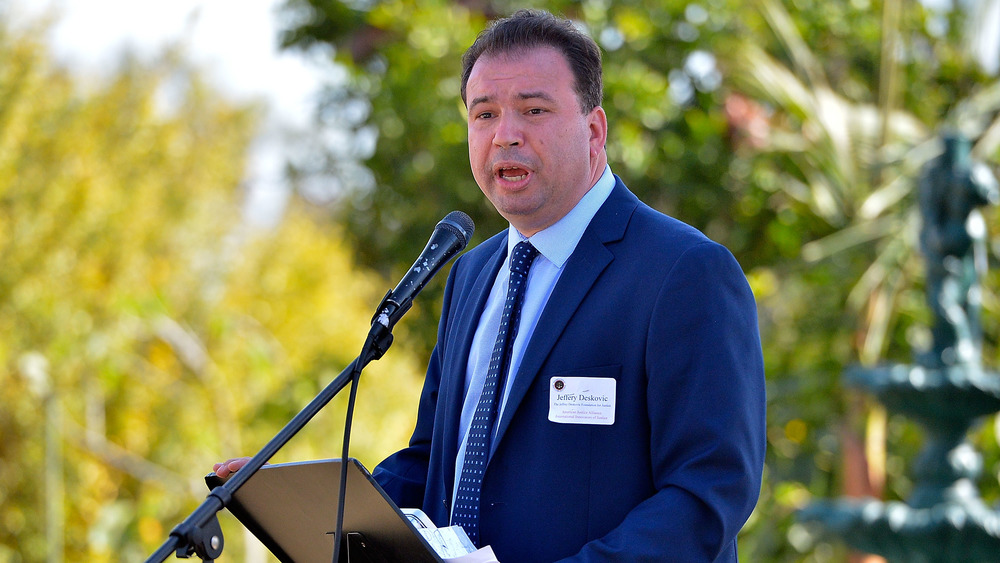The Craziest False Confessions In History
Confession is a powerful act. It's the centerpiece of several religions, it's a key part of crime investigation and police work, and when something weighs on your conscience the relief it offers can be irresistible.
It's easy to assume that only guilty people confess to misdeeds or crimes. After all, why would you take on the consequences of something you didn't do? But as Science magazine reports, false confession is actually a lot more common than you might think. People confess to things they didn't actually do for many reasons, but it usually involves either mental illness or the extreme pressure that police and other people can bring to bear on someone suspected of a crime. Exhausted and confused after hours of interrogation that can often include outright falsehoods told by the police, people can and do come to believe things about themselves they know are not true.
False confessions, whether they're made out of a desire for attention, because of a delusion, or in response to mental and emotional pressure, can have devastating consequences. Not only do they result in an innocent person being punished for a crime they didn't commit, but they also result in the true criminal going free. Here are some of the craziest false confessions in history.
Robert Hubert and the Great Fire of London
The Great Fire of London in 1666 was one of the greatest disasters in modern times. History tells us that it burned for five days, destroyed 13,000 houses and dozens of churches and public buildings, leaving more than 100,000 people homeless (Eyewitness to History estimates the London area's total population at the time at 500,000, meaning 20 percent of the city lost their homes).
As Smithsonian Magazine tells us, a few days after the fire was finally extinguished, a man named Robert Hubert confessed to having started it. He was tried, convicted, and hung in short order. He was almost certainly lying.
Londoners suspected foul play because the fire seemed to spread in strange waves. Today we know that was due to the high winds, but at the time it seemed reasonable to believe the fire was being deliberately spread. Many suspected Catholics, since England had been struggling with a rift between Catholic and Protestant for decades. Hubert was stopped for questioning and spontaneously confessed to being part of a French "gang" that had started and spread the fires, and the authorities, eager to show action, happily took him at his word. But Hubert wasn't even in England when the fire started, and couldn't possibly have had anything to do with it. To this day no one knows why he confessed.
Laverne Pavlinac confessed to escape abuse
As reported by the New York Daily News, Laverne Pavlinac confessed to the murder of Taunja Bennett in January 1990. Bennett's body was found dumped near a local highway after the young woman had been seen out at the local bars the night before. Pavlinac told police she had helped her boyfriend, John Sosnovske, kill Bennett and move her body. Both Pavlinac and Sosnovske pleaded guilty—but during the trial, Pavlinac recanted her confession.
The police were aware that graffiti had been found at a bus station in Montana that read "I killed Tanya Bennet [sic] January 21, 1990 in Portland, Ore. I beat her to death, raped her, and loved it. Yes, I'm sick but I enjoy myself, too. People took the blame and I'm free." The graffiti note was signed with a happy face. But the police did not present this evidence at the trial, and Pavlinac and Sosnovske were convicted.
There was one problem: They didn't do it. As reported by the Los Angeles Times, after serving five years in prison, they were released when a man named Keith Hunter Jesperson (pictured), a serial killer known as the Happy Face Killer responsible for at least eight murders, confessed to Bennett's murder. Pavlinac told reporters she'd lied about the crime to escape Sosnovske, who she described as abusive. Sosnovske said he confessed because he was afraid he would get the death penalty otherwise.
Sture Bergwall made it all up
As reported by The Guardian, Sture Bergwall was until very recently Sweden's most famous serial killer. Claiming to have an alter ego named Thomas Quick, Bergwall confessed to dozens of murders throughout the 1990s, and was convicted of eight of them. He's lived in a psychiatric hospital for the criminally insane for most of his adult life, and is about as famous in Sweden as one can be.
In 2001, Bergwall suddenly withdrew from public life. A reporter became curious and began looking into Bergwall's life and crimes—and discovered something shocking: There was no actual evidence that Bergwall had killed anyone. All the police had were his confessions, and many of those had been offered while Bergwall was heavily medicated. When asked about these inconsistencies, Bergwall easily admitted he'd lied. He'd never killed anyone.
As it turns out, this should have been obvious. Bergwall's confessions frequently got all the details of his supposed murders wrong, and even a cursory examination of Bergwall's movements over the course of his lifetime showed that several of the murders he'd confessed to would have been impossible for him to have committed. It often took police years of painstaking work to force evidence to conform to his confessions. Bergwall was eventually cleared of all charges and released from the hospital into private treatment.
John Mark Karr claimed he killed a child beauty queen
The world was shocked when 6-year-old JonBenét Ramsey was found dead in her family's home in 1996. A child beauty pageant queen, JonBenét's smiling face dominated the news for weeks, and her murder was never solved—despite the fact that, as Bustle reports, a man named John Mark Karr confessed to the crime in 2006.
Karr was arrested in Thailand on charges of child pornography. While in police custody, he confessed to having murdered Ramsey a decade earlier. Karr was extradited to the United States, and a woman named Samantha Spiegel came forward and claimed to be Karr's former girlfriend. She accused Karr of leading a child sex cult.
But as WebMD reports, DNA testing ruled Karr out as a suspect—he wasn't Ramsey's killer. Karr has never explained why he confessed to a horrific child murder he didn't commit, but when a reporter reached out to him in 2010, he responded by writing, "In 2006, I confessed to the whole world who I was ... Do good for little boys and little girls," which might imply that Karr was seeking punishment for something else. Others believe he was just seeking attention and notoriety.
Paul Ingram convinced himself he'd performed Satanic rituals
In 1988, Paul Ingram was a well-respected man in East Olympia, Washington. He'd worked for the Thurston County Sheriff's office for 16 years, and with his wife Sandy was raising four children. Then, as The New Yorker reports, his daughters Ericka and Julie (22- and 18-years-old, respectively) accused their father of sexually abusing them for years. Their accusations eventually grew to include satanic rituals, the slaughter of babies, sexually transmitted diseases given to them by their father, and being forced to abort children Paul had conceived with them.
Initially, Ingram denied these accusations and his wife corroborated his denials. But after consulting with his pastor, Ingram confessed to everything—and more. Between Ingram and his daughters, the scandal grew to implicate Sandy, who supposedly observed her daughter's abuse, and several coworkers of Ingram's at the sheriff's office.
None of the specifics lined up, and almost nothing could be independently verified. The increasingly outlandish details and the way Ingram would confess to things after new details were added made a consulting psychiatrist suspicious. When fed a fake accusation from his daughters, Paul confessed to it as well, indicating that he didn't actually remember what he was confessing to. As noted by Newsweek, some believe that Ingram, exhausted and horrified, suffered a mental break that caused him to confess to things he didn't actually do.
Brendan Dassey was coerced by police
A few years ago, Netflix seemingly captured every eyeball in the world with their true crime series Making a Murderer. The story of Steven Avery's arrest and wrongful conviction on sexual assault and attempted murder charges—and his subsequent exoneration and conviction on a separate charge of the murder of Teresa Halbach—made for an incredibly compelling story.
One tragic aspect of that story involves his nephew, Brendan Dassey. As USA Today notes, Dassey was convicted in 2007 of first-degree intentional homicide, rape, and mutilation of a corpse in the Halbach case. His conviction was based largely on his confession, a confession that he later recanted—and which is widely viewed as coerced.
As noted by Oxygen, Dassey was just 16-years-old when he was accused of helping Avery murder Halbach. He is also mentally challenged, with an IQ estimated in the low 70s. The Seventh Circuit Court of Appeals agreed that his confession was coerced. The police corrected him whenever he got details wrong, and promised him he would get to go home if he told them what they wanted (his interrogations were conducted over the course of 48 hours). As noted by The Huffington Post, Dassey appealed his conviction all the way to the Supreme Court—which declined to hear the case.
The Norfolk Four were intimidated into confessing
In 1997, Norfolk, Virginia was rocked by the rape and murder of Michelle Moore-Bosko. As reported by PBS, a friend of Moore-Bosko told police they should contact Naval officer Danial Williams about the murder. Williams was brought in for questioning and interrogated for 11 hours straight. He confessed, and was charged less than a day after the crime. There was a disturbing lack of actual evidence linking Williams to the crime, but the Norfolk police, led by detective Robert Glenn Ford, developed a complex theory that there were several men involved in the crime, and soon Williams' roommate, Joseph Dick, and two other men, Derek Tice and Eric Wilson, were arrested. All three also confessed.
Despite mounting evidence that the four men couldn't possibly have been involved—and a confession by a man named Omar Ballard, whose DNA matched the evidence—the Norfolk police refused to clear their names for 20 years.
The Norfolk Four, as they became known, claimed that detective Ford was a violently intimidating presence, and that over the course of their interrogations—each lasting between eight and 11 hours—they each became convinced their only hope of survival was to confess. Years later, detective Ford was convicted on charges of extortion and lying to the FBI, and according to The Navy Times the city of Norfolk and the State of Virginia agreed to pay the four former sailors a combined $8.4 million for their wrongful conviction.
Henry Lee Lucas just liked confessing to things
As noted by Psychology Professor E. Tory Higgins, the term "Confessing Sam (or Samantha)" is used to describe someone who routinely makes false confessions. Henry Lee Lucas may be the most prolific Confessing Sam of all time.
As reported by Time, in 1983 Lucas began confessing to hundreds of murders (Raidió Teilifís Éireann reports he claimed to have confessed to 3,000 killings) and police accepted his confession for more than 600 spread out across the US. This was before DNA testing was available, and many police officers were happy to close otherwise cold cases despite a lack of any other evidence linking Lucas to the crimes. Some noted that unlike typical serial killers, Lucas' crimes had no cohesive details—he appeared to have chosen random victims and killed them in random ways. But the police were eager to close the cases, and victims' families were glad to have closure.
In the early 2000s, however, when DNA testing was applied to many of these cases, it was quickly determined that Lucas had lied about most of them. Only three murders—that of his own mother, his girlfriend, and his landlord—can be definitively blamed on him. Professor Gísli Guðjónsson, Emeritus Professor of Forensic Psychology at King's College London, described Lucas as "extremely attention-seeking" and noted that he was an excellent storyteller with the skills to craft narratives the police wanted to hear.
Daniel Voorhees wanted to be famous
Whenever there is a sensational unsolved crime, police have to deal with people who falsely confess, usually seeking attention. As The Baltimore Sun notes, when Charles Lindbergh's infant son was kidnapped in 1932, hundreds of people gleefully confessed to the crime. The one person who didn't confess? Richard Hauptmann, the man convicted of (and executed for) the crime. Similarly, when the body of Elizabeth Short—aka The Black Dahlia—was found in 1947, the case quickly made headlines—and people began confessing. According to Wired, anywhere from dozens to hundreds of people were happy to admit they'd brutally assaulted and murdered a young girl.
As reported by the Napa Valley Register, one of these was a man named Daniel Voorhees. A few weeks after the discovery of the body, he strolled into the police station and confessed to killing Short. He claimed that they'd been having a torrid love affair, and that it had been a crime of passion. Voorhees rose above the other false confessors because he offered a detailed account of his relationship with Short and her murder.
Too detailed, as it turned out. Police constructed a timeline based on Voorhees' story and quickly realized that Short would have been a teenager—and living on the opposite side of the country—when Voorhees claimed to have been romantically involved with her. He fell out of the papers as quickly as he'd lied his way in, and Elizabeth Short's murder remains unsolved to this day.
Sean Hodgson was a pathological liar
In 1979, a young woman named Teresa De Simone was murdered in Southampton in the United Kingdom. In 1980, a man named Sean Hodgson was in a prison in South London. According to BBC News, he told the prison chaplain that he'd murdered De Simone when he'd come across her sleeping in her car. When detectives arrived to speak with him, he repeated his story and signed a confession, along with confessions to two other murders.
At his trial in 1981, Hodgson recanted his confessions and claimed that he was a "pathological liar" who couldn't stop himself from confessing to crimes constantly. But some of the physical evidence in the crime seemed to implicate Hodgson, and he was duly convicted of De Simone's murder.
As BBC News also reports, decades later DNA analysis definitively ruled him out as the killer—the DNA implicated a man who had killed himself in 1988. His conviction was finally overturned in 2009, when Hodgson had served nearly three decades in jail—making him one of the longest-serving false confessors in history—and was 58-years-old. He died of emphysema just three years later.
The West Memphis Three were victims of bias
In 1993, the bodies of three young children—Stevie Branch, Michael Moore, and Christopher Byers—were found in a drainage ditch in West Memphis, Tennessee. The children had been drowned, but their bodies showed signs of mutilation. As reported by Oxygen, police centered suspicion on Damien W. Echols, a moody, black-wearing teenager who was a social outcast in town. Two friends of Echols, Jason Baldwin and Jessie Misskelley Jr., were also implicated and brought in.
As reported by E! Online, Misskelley, who had an IQ of 72, was questioned for 12 hours straight—most of it unrecorded—before finally confessing that he'd watched his two friends rape and castrate the children, and helped to subdue them. Because Echols was rumored to be a believer in the occult, the prosecution developed a theory that the murders had been part of a satanic ritual—a rumor the community was more than happy to believe without evidence.
Misskelley took back his confession, and there was no other evidence linking any of the three to the crime. All three were convicted, and Echols received the death penalty. Over the course of the next 18 years, activists brought increasing attention to the plight of the West Memphis Three, who had been convicted on the strength of a coerced confession and "satanic panic." In 2011, bowing to public pressure, the prosecutor's office offered them what's known as an "Alford plea" which allowed them to get out of jail—but they remain officially guilty.
Jeffrey Deskovic was tricked by a polygraph
When Jeffrey Deskovic was just 16-years-old, his high school classmate Angela Correa was beaten, sexually assaulted, and murdered. As The New York Times reports, Deskovic matched the profile developed of the killer, and when Deskovic broke down into tears at Correa's funeral, the police became suspicious.
Despite the fact that the DNA evidence in the crime didn't match Deskovic, he was charged with the murder. The police offered a theory that Correa had engaged in consensual sex with someone else prior to being attacked. Deskovic was repeatedly questioned over the course of two months, finally breaking down during a session with a faulty polygraph—administered without a guardian present—and he confessed. Despite DNA evidence showing he wasn't involved, he was charged, and as Pace University Magazine reports, he was convicted and sentenced to 15 years in prison.
Deskovic never gave up. He appealed his conviction seven times. When his appeals were exhausted, he wrote letters for years. After trying to convince The Innocence Project to take on his case for years, he finally succeeded. Nine months after they took on his case, the DNA evidence was used to prove another man had killed Correa. Deskovic was released, he sued and received a settlement of $1.5 million, and he has dedicated his life to helping other wrongfully convicted people.
